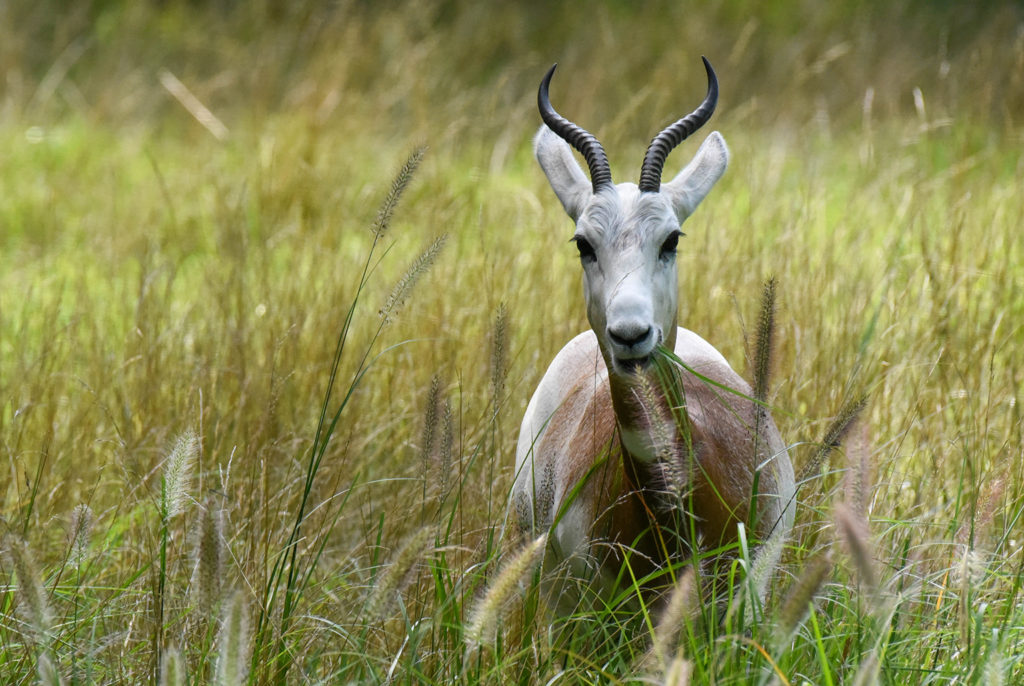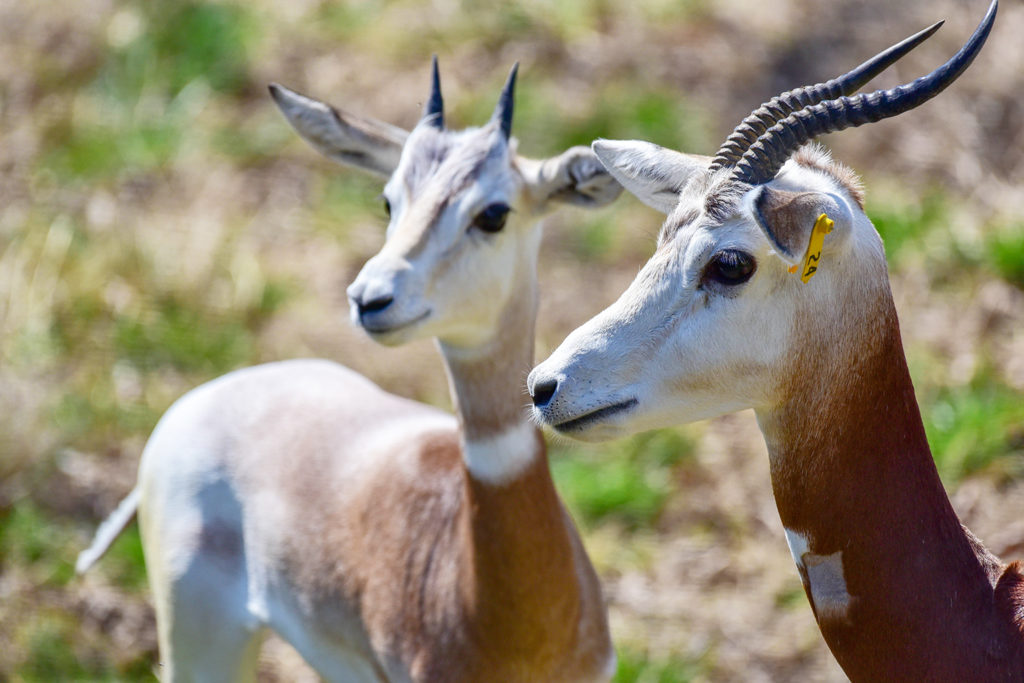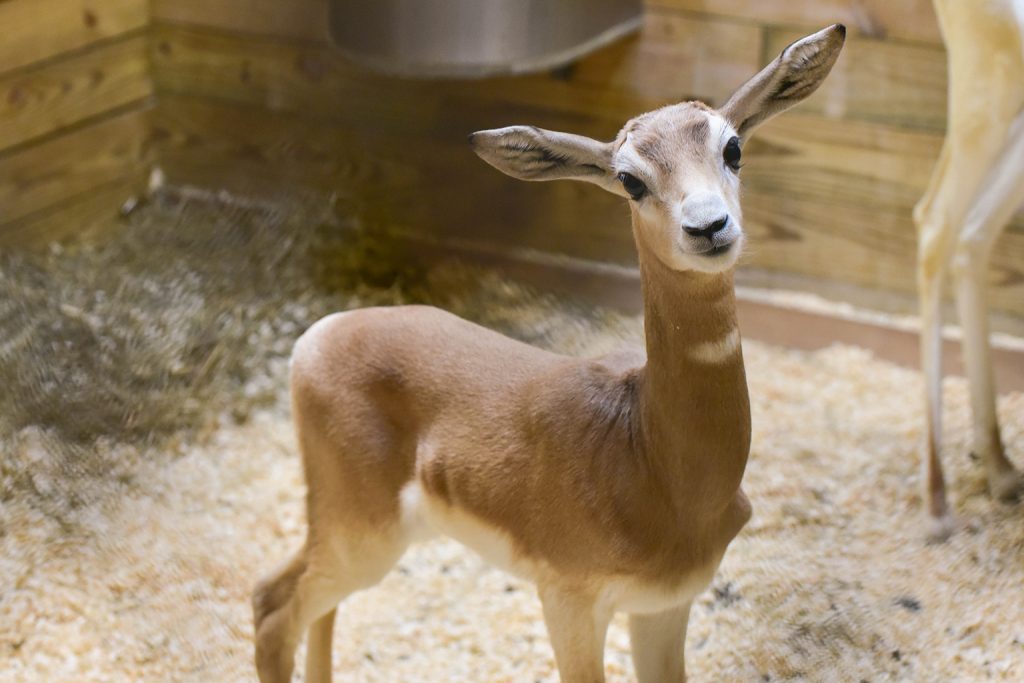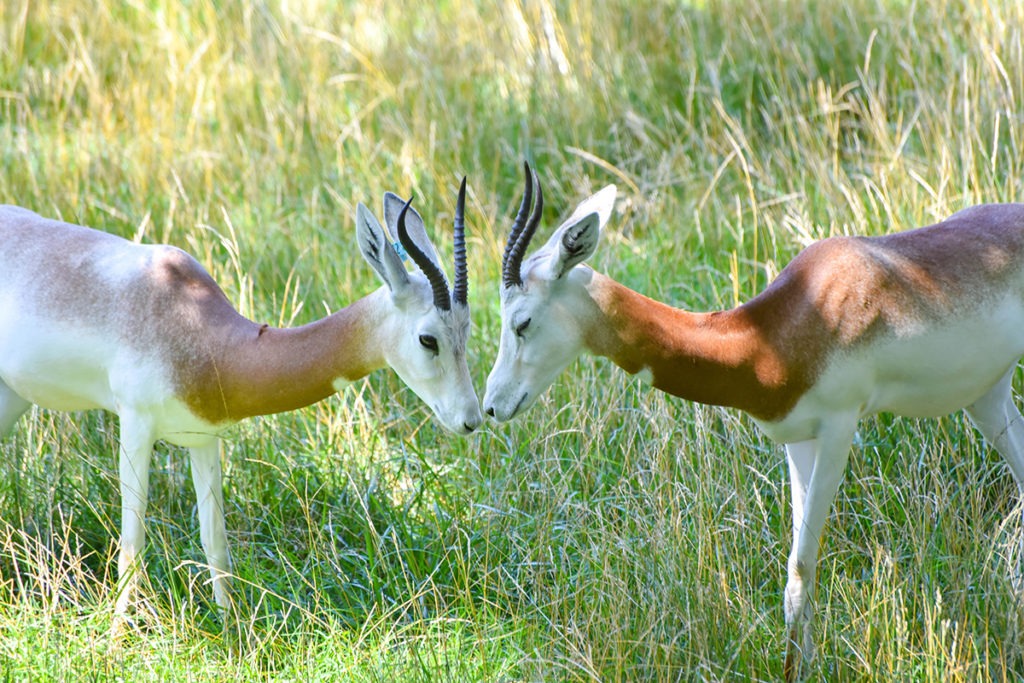Overview
“Where I live”
Addra gazelles live in Africa’s Sahara desert region, from Mauritania to Sudan. They move seasonally from scrub land during the dry season to desert during the wet season. See the Addra Gazelle on exhibit in the African Journey area of The Maryland Zoo.
“How I live there”
Addra gazelles have adapted well to their harsh and arid habitat. They browse and graze mainly on grasses and acacia leaves, moving seasonally to find food. Their size allows them to stand on their hind legs, braced against a tree, to reach vegetation well off the ground. Water is often hard to come by, but Addra gazelles can survive long periods of drought by ingesting water directly from the plants that they eat.
Addra gazelles are naturally social and could once be found living in large herds. Now, because their numbers are so reduced, they are more likely to be seen in groups of 10 to 20 animals. All gazelles, including Addra, are at constant risk of predation. Living in a group provides the extra security of many watchful eyes. Groups vary from a single territorial male with females and offspring, to bachelor groups, to mixed groups of all ages and sexes, more commonly found outside of breeding season.
“Making my mark”
A unique feature of all gazelles is their habit of “stoting” or “pronking,” which means jumping repeatedly with legs straight and rigid and landing on all four legs at once. This habit may communicate alarm, serve to give the animal a better view, or intimidate a potential aggressor.
Gazelles, including Addra, have the unenviable distinction of being a dietary staple to many large carnivores. As such, they are a very significant link in the food chain for many species.
“What eats me”
Lions, leopards, hyenas, cheetahs, and humans prey upon Addra gazelles. As species of prey, gazelles rely on both speed and camouflage to survive. Most gazelles, including the Addra, are two-toned – shaded brown on top and white beneath – which helps to obscure and camouflage them from predators.
Raising Young
Among all gazelle species, including Addra, males establish territories during the breeding season and defend them aggressively from other males so as to have preferential access to females in the area. Females typically give birth to single offspring. Mothers will hide their young for several weeks, coming to them to nurse. Offspring are weaned at about four or five months of age.
Conservation
Addra gazelles are critically endangered. Poaching and overhunting, for horns and meat, have driven the species nearly to extinction. Habitat destruction brought on by natural desertification and overgrazing of domestic livestock also poses a major threat to them.
Taxonomy
- Kingdom: Animalia
- Phylum: Chordata
- Subphylum: Vertebrata
- Class: Mammalia
- Order: Artiodactyla
- Family: Bovidae
- Genera: Nanger
- Species: dama





